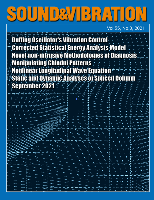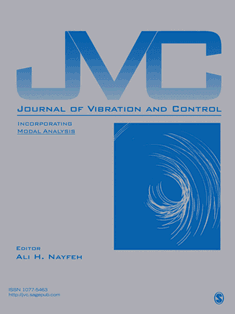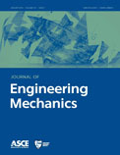
SOUND AND VIBRATION
Scope & Guideline
Elevating Standards in Acoustics and Ultrasonics Research
Introduction
Aims and Scopes
- Acoustic Phenomena and Noise Control:
Research focusing on the generation, propagation, and control of sound in various environments, including buildings, vehicles, and industrial settings. This area includes studies on noise reduction techniques, acoustic metamaterials, and sound absorption mechanisms. - Vibration Analysis and Control:
Investigations into the dynamics of vibrating systems, encompassing both linear and nonlinear vibrations. This includes methodologies for vibration damping, isolation strategies, and the development of advanced vibration control systems. - Structural Health Monitoring and Damage Detection:
Techniques for monitoring the integrity of structures through vibration analysis and acoustic methods. This research area aims to develop reliable methods for identifying and diagnosing structural damage using vibration data. - Fluid-Structure Interaction:
Studies exploring the interactions between fluids and structures, particularly focusing on how fluid dynamics affect vibration behavior and acoustic emissions in various engineering applications. - Computational Methods and Modeling:
Development and application of sophisticated computational techniques for simulating sound and vibration phenomena. This includes finite element analysis, spectral methods, and machine learning approaches for predictive modeling. - Experimental Techniques in Sound and Vibration:
Innovative experimental methodologies for measuring and analyzing sound and vibration. This area covers advancements in sensor technologies, data acquisition systems, and experimental validation of theoretical models.
Trending and Emerging
- Machine Learning and Data-Driven Approaches:
There is a growing trend towards utilizing machine learning techniques for analyzing sound and vibration data, enhancing predictive modeling, and improving structural health monitoring systems. - Acoustic Metamaterials and Advanced Noise Control:
Research on acoustic metamaterials is expanding, focusing on innovative designs for sound absorption and noise cancellation in various applications, reflecting a shift towards materials science in acoustics. - Nonlinear Dynamics and Complex Systems:
Emerging studies are increasingly addressing the nonlinear dynamics of systems, exploring phenomena such as chaos, bifurcations, and complex interactions that were previously less emphasized. - Energy Harvesting and Sustainable Technologies:
The integration of sound and vibration technologies with energy harvesting applications is becoming more prevalent, showcasing a trend towards sustainability and efficiency in engineering designs. - Real-Time Monitoring and Smart Systems:
There is an upward trend in research related to real-time monitoring systems that utilize advanced sensors and IoT technologies for sound and vibration analysis, enhancing predictive maintenance and operational efficiency.
Declining or Waning
- Traditional Vibration Analysis Techniques:
There has been a noticeable decrease in publications focusing solely on classical vibration analysis methods, such as basic modal analysis or simple linear models, as researchers increasingly adopt more complex, multi-faceted approaches. - Low-Frequency Vibration Studies:
Research specifically targeting low-frequency vibrations has seen a decline, possibly due to a shift towards addressing broader frequency ranges and more complex vibration behaviors in practical engineering applications. - Static Structural Analysis:
The focus on static structural analysis methods has waned as dynamic analysis, particularly involving time-dependent and nonlinear phenomena, gains traction in both theoretical and applied research. - Basic Acoustic Measurement Techniques:
Traditional acoustic measurement techniques are becoming less common as the field moves towards more sophisticated methods involving advanced signal processing and machine learning algorithms.
Similar Journals

Acoustics
Exploring the Soundscape: Where Research Meets InnovationAcoustics is a dynamic, peer-reviewed open access journal published by MDPI, dedicated to advancing the field of acoustics since its inception in 2019. With an E-ISSN of 2624-599X, this journal serves as a pivotal platform for researchers, professionals, and students engaged in the study of sound, its generation, transmission, and reception, as well as its applications across various domains, such as engineering, environmental science, and health. Based in Switzerland, Acoustics has quickly established its reputation, achieving a commendable Q2 ranking in the Acoustics and Ultrasonics category, as well as a noteworthy 16th position out of 44 in Scopus ranking, placing it in the 64th percentile among its peers. The journal aims to provide a comprehensive understanding of acoustic phenomena through interdisciplinary collaborations and innovative research, while ensuring immediate and free access to all published articles. For those vested in the ever-evolving landscape of acoustics, this journal represents a crucial resource for the latest developments and findings in the field.

Acoustical Science and Technology
Decoding the Dynamics of Sound and TechnologyAcoustical Science and Technology, published by the Acoustical Society of Japan, is a pivotal journal in the field of acoustics and ultrasonics, serving as a platform for innovative research and advancements from 2000 to 2024. Featuring an ISSN of 1346-3969 and E-ISSN 1347-5177, this journal comprises scholarly articles that cater to both theoretical and practical aspects of acoustical science, appealing to research professionals, academics, and students alike. Although currently not designated as an open-access publication, Acoustical Science and Technology holds a respectable Q3 ranking in the 2023 Acoustics and Ultrasonics category, indicating its significance within the academic community. With a Scopus rank of 28 out of 44 in its field, the journal continues to contribute valuable knowledge for acoustic innovation and application while fostering a deeper understanding of sound phenomena globally. For those who seek to explore cutting-edge findings and methodologies in this essential area of study, this journal is an invaluable resource.

Archive of Mechanical Engineering
Elevating Standards in Mechanical ResearchThe Archive of Mechanical Engineering, published by Polska Akademia Nauk (Polish Academy of Sciences), is a distinguished platform for disseminating cutting-edge research in the fields of Mechanical Engineering and Mechanics of Materials. Since its inception, the journal has evolved and embraced an Open Access model since 2010, thereby enhancing accessibility and fostering wider dissemination of knowledge among researchers, professionals, and students globally. The journal covers a broad spectrum of topics, ensuring that vital advancements in mechanical engineering are communicated effectively. Recognized as a Q3 category journal in both its relevant categories as of 2023, the Archive continues to establish itself with a competitive Scopus Rank, aiming to elevate the standard of research and innovation. By merging historical insights with contemporary advancements, the journal serves as an essential resource for those seeking to delve into the evolution and future of mechanical engineering.

ARCHIVES OF MECHANICS
Championing Open Access for Mechanical InnovationArchives of Mechanics, published by the Polish Academy of Sciences Institute of Fundamental Technological Research, is a distinguished open-access journal established in 1971 that has played a pivotal role in the dissemination of knowledge in the fields of Mechanical Engineering and Condensed Matter Physics. With its commitment to accessibility since adopting open access in 2022, this journal provides a platform for researchers, professionals, and students to share cutting-edge research findings and innovative methodologies. Although it currently holds a Q4 ranking in Condensed Matter Physics and a Q3 ranking in Mechanical Engineering for 2023, its comprehensive scope, which spans critical advancements in mechanical systems and materials science, positions it as a valuable resource for the academic community. Located in Warsaw, Poland, the journal continues to contribute significantly to the global discourse on mechanics and is dedicated to fostering new ideas that advance both theoretical and applied aspects of the discipline.

Akustika
Unveiling the Science of Sound DynamicsAkustika is a premier journal dedicated to the field of acoustics and ultrasonics, published by STUDIO D-AKUSTIKA SRO in the Czech Republic. With an ISSN of 1801-9064, this journal provides a platform for cutting-edge research and development in acoustics, emphasizing advancements in both theoretical and practical applications. Although currently ranked in the Q4 category for Acoustics and Ultrasonics based on 2023 Scopus Ranks, the journal aims to foster growth and innovation within the community, offering invaluable insights for researchers, professionals, and students alike. It encompasses a wide-ranging scope that reflects the dynamic nature of acoustics, making it a vital resource for those engaged in this crucial field. With contributions dating back to 2012, Akustika is committed to promoting scientific dialogue and enhancing the understanding of sound in various environments.

JOURNAL OF VIBRATION AND CONTROL
Elevating Engineering Standards through Vibrational ScienceJOURNAL OF VIBRATION AND CONTROL, published by SAGE PUBLICATIONS LTD, is a distinguished peer-reviewed journal that serves as a pivotal resource for researchers and professionals in the fields of aerospace, automotive, materials science, and mechanical engineering. Since its inception in 1995, this journal has been instrumental in disseminating cutting-edge findings on the dynamics of vibrations and control systems, addressing both theoretical developments and practical applications. With an impressive array of impact metrics—ranking in the top quartile (Q2) across various engineering categories—it ensures that high-quality research is accessible to its audience, fostering innovation and collaboration. Although currently not an open-access journal, it remains influential within its domain, indexing a breadth of topics that bridge fundamental science and engineering practices. Researchers and students interested in exploring the dynamics of materials and structures will find the JOURNAL OF VIBRATION AND CONTROL an invaluable tool for advancing their knowledge and contributing to ongoing discussions in the field.

International Journal of Acoustics and Vibration
Fostering Collaboration in Acoustics and Vibration ResearchInternational Journal of Acoustics and Vibration is a leading peer-reviewed journal published by the International Institute of Acoustics & Vibration, focusing on the diverse fields of acoustics and vibration. With an ISSN of 1027-5851, this journal has been a pivotal resource since its establishment in 2000, examining both fundamental and applied aspects of sound and vibration phenomena that are critical for advancements in engineering and related sciences. Although it does not offer open-access options, it adheres to rigorous standards of academic excellence, as evidenced by its Q3 category rankings in Acoustics and Ultrasonics and Mechanical Engineering, according to the 2023 assessments. The journal's scope encompasses innovative research, theoretical studies, and practical applications, making it essential reading for researchers, professionals, and students aiming to stay updated with the latest developments in these disciplines. With the growing relevance of acoustics and vibration in numerous industries, the International Journal of Acoustics and Vibration serves as a vital platform for disseminating knowledge and fostering collaboration among scholars and practitioners alike.

Coupled Systems Mechanics
Unraveling the Dynamics of Coupled SystemsCoupled Systems Mechanics is a pioneering journal in the fields of Civil and Structural Engineering and Mechanics of Materials, published by TECHNO-PRESS. With an ISSN of 2234-2184 and an E-ISSN of 2234-2192, this journal actively contributes to the academic discourse surrounding coupled system mechanics, addressing complex interactions within engineering disciplines. Hailing from South Korea, the journal has been committed to disseminating high-quality research since its inception, converging years from 2017 to 2024. It holds a respectable Q3 ranking in both Civil and Structural Engineering and Mechanics of Materials, indicating its relevance and impact within these fields. Researchers, professionals, and students can expect cutting-edge studies and innovative methodologies, as the journal consistently aims to enhance understanding and application of coupled systems in engineering. Although it operates under a subscription model, it remains an essential resource for those looking to stay at the forefront of advancements in engineering sciences.

JOURNAL OF ENGINEERING MECHANICS
Transforming Ideas into Engineering SolutionsJOURNAL OF ENGINEERING MECHANICS, published by the ASCE - American Society of Civil Engineers, stands as a premier interdisciplinary journal in the field of engineering mechanics. With an impact factor reflecting its vital contributions—placing it in the Q1 category for both Mechanical Engineering and Mechanics of Materials—this journal has established itself as a critical resource for researchers and professionals alike. Since its inception in 1981 and continuing through 2024, it has provided a platform for the dissemination of high-quality research, emphasizing innovative methodologies and cutting-edge findings. The journal's ranking in Scopus further underscores its significance, with impressive standings in the 79th and 77th percentiles of its respective categories. As a vital resource for students and professionals aiming to stay abreast of developments in engineering mechanics, it remains committed to fostering rigorous scientific exploration and practical applications within the field.

APPLIED ACOUSTICS
Shaping the soundscape of tomorrow’s industries.Applied Acoustics is a prestigious peer-reviewed journal published by Elsevier Science Ltd, dedicated to advancing the field of acoustics and ultrasonics. With an impressive impact factor that places it in the Q1 category for the 2023 Acoustics and Ultrasonics rankings and a strong Scopus rank of #7 out of 44 in its field, this journal serves as an essential resource for researchers, professionals, and students. Covering a broad range of topics related to practical applications of sound in various industries, Applied Acoustics offers insights into innovative technologies and methods that push the boundaries of acoustic research. The journal spans from its inception in 1968 to its continuation through 2025, promising a wealth of historical and contemporary studies. While not currently an open-access publication, it remains a pivotal platform for disseminating high-quality research findings and fostering collaboration within the global acoustics community.